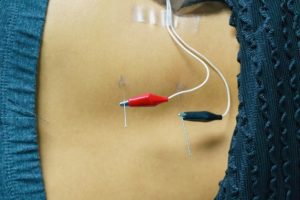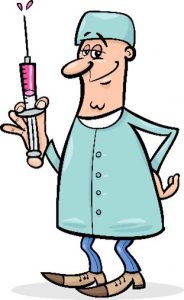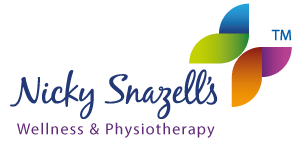I get asked a lot of questions about physiotherapy assessment. What do we do at my clinic? How do I assess? How do I teach assessing?
In my previous blog A Different Perspective On Your Physiotherapy Assessment, I mentioned that the first and most important thing is to have a safe, quiet environment that builds a connection and trust. If you don't feel that with your physiotherapist, you're not going to want to proceed to any kind of medicine or treatment and your outcome won't be as successful. There won't be that connection.
To recap, the most important thing for the patient is that the physiotherapist has created a sacred space, a quiet office, where the phones are switched off, the computer is not a distraction, and you eyeball each other to get that connection. And then your physiotherapist listens to your story. And how you describe what's going on with you. And then, in that moment of connection, your physiotherapist can get glimpses of the real authentic self behind the story, who you really are.
Once your physiotherapist glimpses the story of the problem, he or she can start to elicit some background which is past medical history. So we'll ask questions like the health of your family to see if there are relevant genetic links. We may also explore your beliefs and values and more about your family so we'll know how difficult it is for you to attend and for you to have the necessary treatment. We may touch on your past experiences of treatment because if you've been scared or let down previously, you're going to have very different expectations. We need to address that head-on.
And then, of course, my favourite four keys questions (see my first book ‘The Four Keys To Health’ available on Amazon), which looks into your mindset, lifestyle, fitness and what you eat. All these help us assess how well your immune system is working, and your general health, which helps refine our treatment prescription.
That, in a nutshell, is the first part of the physiotherapy assessment.
In my next blog ‘The Subjective Physiotherapy Assessment – Part 2’ I will continue on this journey of helping you understand how to really get the most out of this process.
In the meantime, if you are in pain right now and you feel confident we can help, then why not call now. Erica, Jean and Charlotte will be happy to help.
Call 01889 881488 Now
p.s. Don’t try to book online at this time as that is only suitable for existing clients already being treated for an existing problem.
How can I relieve neck pain? The first thing to understand is how this happened, neck pain can be caused by other conditions such as muscle weakness in the shoulders, perhaps lifestyles such as workplace seating or even sports. Take a moment to consider what could be causing yours. While doing this, think about the type of pain you have. Is it a strain or a trapped nerve?
What does a trapped nerve in neck feel like?

A trapped never typically feels more painful in certain positions, and the pain again can be shooting, described as electric or pulsing. A trapped nerve can throb and jolt when you are moving. A strain usually feels more like a burn or a tear; these sensations can be confusing, so please do not worry if you struggle to distinguish between the two - Our team can help you understand this better and decide the best ways to help you.
How long does neck strain take to heal?
A strain can take between 24-hours and a week to recover. If you are concerned Nicky Snazell can help you with pain relief, it is still worth considering what caused this. The underlying source is always the best way to provide you with long-term pain relief, and maintenance can reduce reoccurrence.
What is the fastest way to fix a stiff neck?
If you are not ready to consider treatment, we recommend gentle stretches and a gentle massage in-between cooling and warming treatments like an ice-pack and a hot water bottle/wheat/rice bag. Be careful when doing this yourself. If you are unsure how to manage this effectively, contact us.
Which massage is best for neck pain?
This depends on how you got the neck pain; if it was doing sports, then as you might expect, sports massage could be the proper treatment. Typically, massage is the right treatment for neck pain; manipulating the soft tissue can relax the problem and promote blood flow and healing.
Where can you go for help with neck pain?
Nicky Snazell pain relief clinic in Stafford can help with neck pain. Please view this page for more information on neck pain, or contact us. Our experienced team of physiotherapists will help you navigate your pain and provide the most effective advice to help you long term.
Like a traditional massage, sports massage more intensely manipulates the soft tissues and tendons. In addition, the masseuse uses more strength to purge the muscles, which helps to loosen and condition the essential structural integrity. As a result, you are less likely to become injured during sports or physical activity.
Sports massage also helps to promote blood flow, which can aid healing and recovery after intensive exercise, which is why you will often find sports massage administered before and after races at running clubs.
What are the common areas for sports massage?
- Typical sports massages include legs used by runners, athletes, hockey, cricket, and rugby players.
- As well as the common sports previously mentioned, Netball and Tennis are also popular with shoulder and lower back sports massage therapies.
- The lower back is also a widespread complaint from horse riders, and we have seen jockeys from all over the world.
What is a sports massage therapist?
A sports massage therapist administers the massage, 'a masseuse', and is often referred to as a therapist as this serves a purpose and not just for pleasure. Sports massage has more medical benefits than other massages which are for relaxation and wellbeing.
What is a sports massage like?
A sports massage is slightly more aggressive than a typical massage, so it can be somewhat uncomfortable initially; however, your therapist will discuss this with you throughout so that it is tolerable. The fact it is more aggressive should not put you off because the effectiveness of the sports massage is driven by the pressure placed on the soft tissues.
There are many reasons that sports massage is so good for you and keeps you injury-free. This article covers some of the reasons sports massage is good for you.
What is sports massage good for?
- It is good for legs, shoulders, lower back, knees, calves, and neck.
- It is good for keeping your joints stable and loose, reducing the risk of sports injuries.
- It is ideal for those who are physically active, runners and hikers.
- It is good for people who have previous injuries to stave off issues resurfacing.
How can Nicky Snazell Pain Relief Clinic help?
Pain relief clinic is here to help; you will see one of our very experienced team. From there, we will discuss your specific needs and then complete your wellness programme. Nicky and the Pain Relief Clinic look forward to welcoming you aboard. If you are a first-time client, then please use the contact form; if you are an existing patient, you can use the online booking form.
Physiotherapy Treatment For Vertigo Caused By BPPV
Vertigo is a problem that affects around half the population at some point in their lives and is more common as we get older. Fortunately, the symptoms usually only last for a few seconds to a minute or so, but the symptoms are very unpleasant including:
• Nausea and vomiting
• Dizziness
• Fainting
• A sense of rotating
• Inability to stand or walk
What Causes Vertigo
It is widely accepted as the most common cause of vertigo is BPPV (Benign Paroxysmal Positional Vertigo) and this is linked to the 3 semi-circular canals in the inner ear. The role of these canals is to sense the position of the head in the 3 axes of up /down, right / left, forward/ backwards. If any incorrect signals occur, the brain doesn’t know where your head is and gets confused.
Faulty signals are caused by very small chalk crystals becoming loose and getting into the semi-circular canals. These loose crystals then move in the canals, stimulating faulty signals.
The types of movement which most frequently initiate a vertigo attack are rolling over in bed, getting out of bed, sitting up after lying flat or looking up or down.
Vertigo Treatment
Left untreated, vertigo will usually resolve itself but may take several months. Fortunately, treatment is fairly simple and painless and typically no more than 3 specialised Physiotherapy treatments are needed over a couple of weeks.
David Paling, a senior physiotherapist and our clinical lead can diagnose and treat BPPV.
If you or someone you know is suffering from vertigo, then physiotherapy treatment with us should seriously be considered.
Call the clinic now on 01889 881488 and ask for an assessment with David.
Most people have heard of acupuncture and understandably assume that if a treatment involves a needle, it must be acupuncture. This is akin to saying that everybody who uses a knife must be a surgeon. Our task here is thus to look in depth at all the ways that needles are used, so that you better understand what the differences are and thus eliminate the confusion surrounding this type of treatment. By doing so, it will also hopefully help you gain confidence to try this form of treatment in the future and help you seek out the best type of practitioner for your problem.

History
Historically, the use of the needle for treatment started in the east, most probably in China, many thousands of years ago. Thus, there have been thousands of years to refine and improve the understanding of acupuncture in Chinese Medicine, the latter being a complete medical system which looks at the whole body. It regards illness as the body being out of balance and thus seeks to identify why it is out of balance and then treats to redress this.
What Is Acupuncture?
Today’s acupuncture uses very thin needles, much thinner than a hypodermic needle. These are inserted in the body at prescribed Chinese points which have a known therapeutic effect, or directly into an area of muscle spasm or pain. The needles are generally inserted and then left for anything up to 30 minutes.
Electro-Acupuncture
Electro-acupuncture was originally developed for use as analgesia in surgery. However, the benefits of electro–acupuncture were soon recognised for the control and treatment of pain. Research is still ongoing to better understand the best settings to use and the technology is thus continuously evolving.

The equipment we use in house allows us to vary the settings to help you in the best way possible. It is understood that the use of different frequencies can stimulate the release of natural opioid pain killers in the body and that by using dual frequencies, both the intensity and longevity of the pain control can be varied.
A benefit of using needles with this type of electrical signal is that the pain relief can be applied at deep levels, within the muscles that are causing the pain.
Western Acupuncture
Western acupuncture as taught today is a small subset of Chinese acupuncture, combining needling to local areas of pain or spasm, ‘Ah Shi’ points, sometimes called trigger points, plus some use of Chinese points, but without reference to Chinese theory.
Needles are used in the same way as Chinese medicine and the types of needle are the same. The focus in western acupuncture is to link the treatment to western medical principles, which requires ‘evidence based’ justification. This is discussed below in the Acupuncture in the NHS section.
Chinese Medicine is a complete standalone medical system and is totally different to western medicine. By teaching and using Chinese acupuncture points, western acupuncture in effect has a foot in both camps.
Intra Muscular Stimulation – GunnIMS
The majority of acupuncture needling is performed at relatively shallow depths in the body. As explained above, the needles are inserted and left static until removed.
GunnIMS is completely different.
Professor Chan Gunn, a medically qualified Doctor, discovered GunnIMS by accident while carrying out tests in a laboratory in Vancouver, Canada. He found that patients were in pain, quite often long term, or chronic, pain, because of muscles being in spasm. In addition these muscles were not responding properly to the signals from the brain to expand and contract. He found that by inserting needles into these non-responding muscles, those same muscles could be made to release and start behaving normally. To effectively release a muscle he found that multiple insertions were needed, using the needle more as a microsurgical tool rather than a simple insertion device.
Eventually GunnIMS evolved to using an external device, called a plunger, which allowed the therapist to rapidly and easily retarget the needle to achieve the required result.
GunnIMS is fundamentally different to acupuncture
The results in treating muscle pain are far superior. It utilises western anatomical knowledge and makes no reference to Chinese Medicine. It generally requires much deeper needling and directly targets and micro surgically treats muscles in spasm. The training is thus totally different and only those practitioners trained through the Institute for the Study and Treatment of Pain (ISTOP), based in Vancouver, are qualified to provide GunnIMS. Nicky Snazell is one of only 3 practitioners in the UK to have reached the highest level of training and was awarded the first honorary membership of ISTOP in the world for her dedication to the use of GunnIMS.
Nothing Is Wrong

A major strength of GunnIMS is that it is unsurpassed in diagnosing and treating muscle spasm. Both MRI and X-ray cannot ‘see’ muscle spasm, it is totally invisible to these scans. Thus many patients who may have been in long term pain and given a scan, only to be told ‘nothing is wrong’ will now understand why.
Dry Needling
Dry needling refers to the use of a non-hypodermic needle. Acupuncture needles are solid, they cannot inject a drug. Thus they provide a dry and not wet treatment.

Hypodermic needles, which are used to inject drugs, are relatively much thicker and more painful to insert. This is perhaps why so many of us grow up with needle phobias.
It may at first seem that both acupuncture and dry needling are the same. After all they are both dry techniques. But there the similarities end. Whereas acupuncture is a traditional method developed thousands of years ago, dry needling is relatively new, only having been adopted in the last few decades.
Dry needling is primarily used to treat tight muscles, or trigger points, to ease muscular pain. In some cases the needles are inserted and left for a number of minutes. In some cases the needles are moved up and down to increase the effect.
The term Dry Needling is tending to replace GunnIMS as the teaching of dry needling is much more widespread. In many cases there is an overlap with GunnIMS. However, GunnIMS specifies that only Medical Doctors and Physiotherapists (in countries with the highest standards) are qualified to be trained, it also requires intensive training and passing exams. Dry needling courses can be attended by less qualified therapists and can involve little more than a weekends training.
Does Needling Hurt?
Our skin has a lot of nerves to sense touch, hot and cold, pressure and pain. However, once a needle has gone beyond the immediate outer layer, there are very few pain sensors.
A skilled practitioner understands this and will penetrate the skin very quickly, so that you would feel nothing more than a small prick. (no pun intended)
TCM will aim to penetrate to the layer of fascia where the patient gets a very definite sensation which is almost totally painless. Thus the majority of TCM and those western practitioners who use TCM points, will be almost totally painless.
The next level of needling is dry needling into tight muscles, or trigger points. This can cause pain, usually only slight and short lived.
Again, an experienced practitioner can use skills and technology to largely alleviate the pain response. Firstly, by using a therapeutic laser, which will generally penetrate up to 30mm into the body and greatly help to relax muscle spasm. In fact ‘Laser puncture’ refers to the use of a laser over TCM points, and can be helpful in treating patients without needles.
The second and more powerful technique to minimise a pain response is by first acupuncturing specific points which are known to minimise pain signals reaching the brain and others that will put the patient into a relaxed meditative state. This is no different to the same procedures used in China and now used in the USA for pain control in surgery.
A healthy, normal muscle has very limited ability to even realise a needle has penetrated it and in this situation a patient is unlikely to be aware at all. At times muscles will go into severe spasm and fail to respond to normal expand and contract commands from the brain. A very common example is low back pain and sciatica.
If you feel that acupuncture or GunnIMS could help you then please call us on 01889 881488 to book now.
Our staff capabilities are at the highest standard available in the UK.
